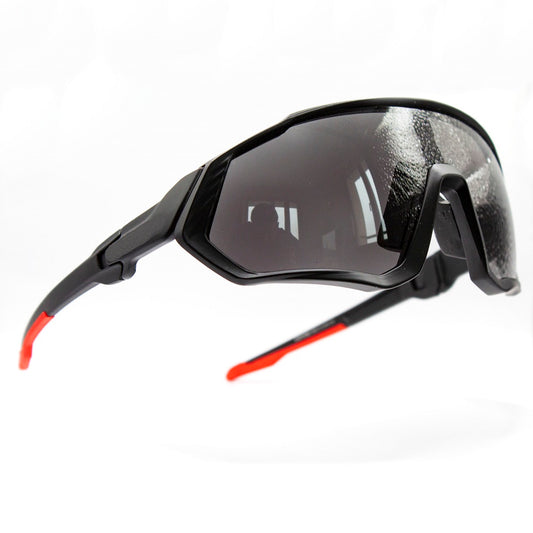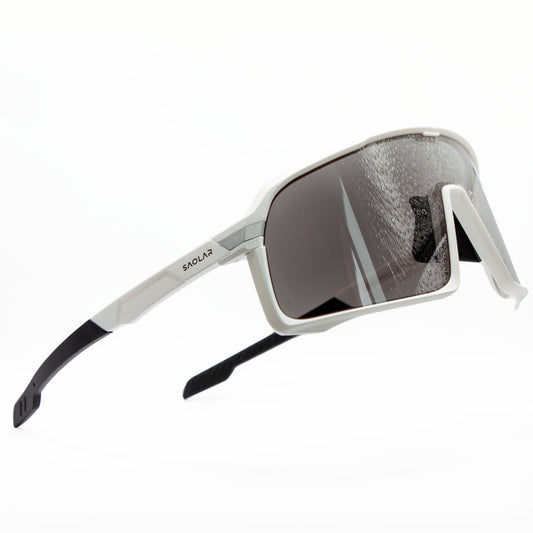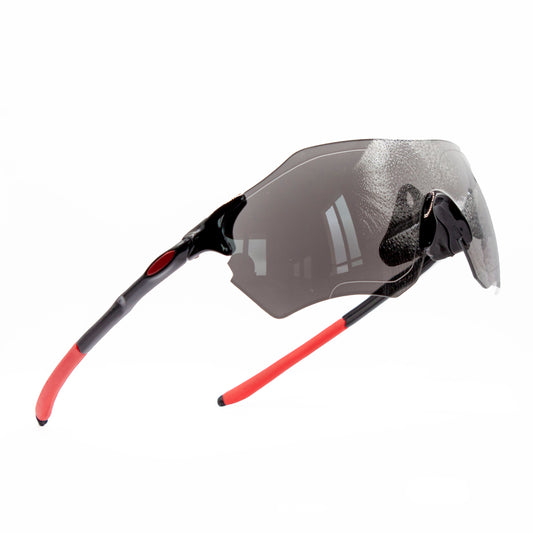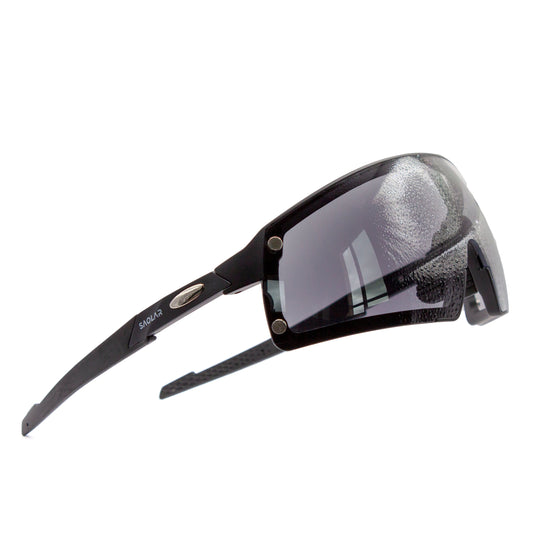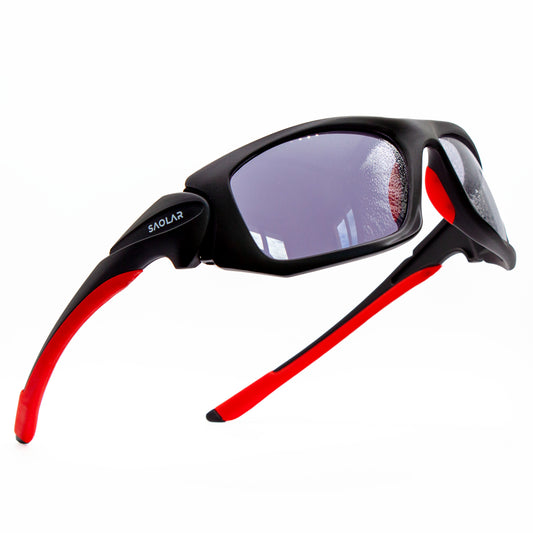The Importance of Technical Climbing in Mountain Biking
In the exhilarating world of mountain biking, the ability to conquer challenging terrains is crucial. Technical climbing is a fundamental skill that separates proficient riders from the rest. It involves navigating steep, rocky, and uneven paths, requiring not just physical strength but also mental fortitude and precise climbing techniques.
For many mountain bikers, improving technical climbing skills is an ongoing journey. Mastery of these skills not only enhances overall performance but also increases safety and enjoyment on the trails. Whether you're tackling a well-known trail or exploring new terrain, the ability to handle technical climbs efficiently can make a significant difference in your riding experience.
Why Focus on Technical Climbing?
Technical climbing is more than just a physical challenge; it's a test of your ability to strategize and adapt to ever-changing conditions. Successful climbing demands a combination of balance, power, endurance, and mental focus. Unlike straightforward climbs, technical climbs are characterized by obstacles such as rocks, roots, and steep gradients that require specific techniques and a strategic approach.
Improving your climbing skills can lead to a more fulfilling riding experience. It allows you to tackle tougher trails, maintain momentum, and conserve energy for longer rides. Additionally, it can boost your confidence, knowing that you can handle whatever the trail throws at you.
Our Goal: Providing Actionable Habits
Recognizing the importance of technical climbing in mountain biking, this article aims to provide you with actionable habits to improve your skills. By adopting these habits, you'll be able to approach climbs with a clear strategy, break down complex sections into manageable parts, and ultimately become a more proficient climber.
We'll delve into four key habits that have proven effective in enhancing technical climbing skills:
- Setting Specific Goals
- Starting Small
- Solo Riding
- Shifting Mindset
Each habit is designed to address different aspects of climbing, from goal-setting to mental preparation, ensuring a comprehensive approach to skill improvement. By integrating these habits into your training routine, you'll not only improve your climbing skills but also enjoy a more rewarding and confident riding experience.

Setting Specific Goals
The Importance of Clear and Measurable Goals
In technical climbing, setting specific climbing goals is crucial for tracking progress and staying motivated. Vague objectives like "improve climbing" can be difficult to measure and achieve. Instead, having clear, measurable goals provides a concrete target to aim for, making it easier to see improvements and stay focused on your training.
Why Specific Goals Matter
When working on technical climbing, a well-defined goal acts as a roadmap. It helps break down the larger objective into smaller, manageable tasks, allowing for systematic progress. For instance, aiming to climb a particular trail without putting a foot down offers a clear, achievable target compared to a general goal of "becoming a better climber."
Setting Your Goals
To set effective specific climbing goals, consider the following steps:
- Identify the Objective: Choose a particular climb or trail that challenges you. Ensure it aligns with your overall climbing aspirations.
- Make it Measurable: Define what success looks like. This could be climbing without dabbing, improving your time, or mastering a specific technique.
- Set a Timeline: Give yourself a deadline to achieve your goal. This helps maintain focus and urgency.
For example, if your goal is to climb a steep, technical trail like "Escape From Moscow" without dabbing, break it down into smaller sections and work on each part individually. Track your progress by noting how often you can complete each section without stopping.
Tracking Progress with Tools
Utilizing tools like the FTP Calculator can help set and measure your fitness goals, providing additional structure to your climbing objectives. This tool helps quantify your progress and tailor your training to improve your climbing endurance and power.
Setting specific climbing goals is essential for improving your technical climbing skills. Clear and measurable objectives provide direction and motivation, making your training more effective. By breaking down larger goals into smaller tasks and using tools like the FTP Calculator, you can systematically enhance your climbing performance and achieve new heights in your mountain biking journey.
Starting Small
The Benefits of Breaking Down Climbs
In technical climbing, tackling an entire challenging route in one go can be overwhelming. By breaking down climbs into smaller, manageable sections, you can make gradual progress and build confidence. This approach allows you to focus on one segment at a time, mastering each before moving on to the next. This method not only simplifies the learning process but also provides a sense of accomplishment as you complete each part of the climb.
How to Tackle Sections Individually
- Identify Key Sections: Start by scouting the climb and identifying the most difficult sections. Break these down into smaller parts if necessary.
- Focus on One Section at a Time: Concentrate on mastering one section before moving to the next. For example, if the climb has four challenging segments, work on each individually.
- Use Markers: Place small markers or landmarks to signify the start and end of each section. This helps in visualizing and breaking down the climb.
- Repeat and Refine: Practice each section repeatedly until you can complete it smoothly. Focus on refining your technique with each attempt.
Example: Climbing "Escape From Moscow"
Take the example of climbing the trail "Escape From Moscow." This trail has a mile-long, sandy grind followed by four technical, punchy sections filled with square-edged rocks. Initially, focus on the sandy grind to build endurance. Once comfortable, tackle each technical section one at a time, practicing until you can navigate each without dabbing.
- First Section: Focus on maintaining momentum and picking the right line.
- Second Section: Work on your balance and use ratcheting to avoid pedal strikes.
- Third Section: Concentrate on timing your pedal strokes and weight distribution.
- Final Section: Combine the skills learned from the previous sections to complete the climb.
Gradual Improvement
By focusing on gradual improvement, you can systematically conquer each part of the climb. This methodical approach helps in building muscle memory and improving technique, making the entire climb more manageable over time. As you gain confidence in each section, you’ll find that piecing together the entire climb becomes less daunting.
Motivation Tips
Staying motivated during this process is crucial. For some inspiring quotes to keep you going, check out our 50 Bike Quotes That Inspire and Motivate. These quotes can provide the mental boost needed to tackle even the most challenging sections of your climb.
Breaking down climbs into manageable sections and focusing on gradual improvement can significantly enhance your technical climbing skills. This approach not only simplifies the process but also helps in building confidence and technique, making difficult climbs more achievable.

Solo Riding
Advantages of Solo Rides
Practicing technical climbs during solo rides offers numerous benefits that can accelerate your progress and enhance your technical skills. Without the pressure and distractions of a group, you can focus entirely on your performance, making it easier to concentrate on specific techniques and areas of improvement.
Benefits of Practicing Alone
- No Pressure: When riding alone, you don't have to worry about keeping up with others or feeling rushed. This allows you to attempt challenging sections multiple times without holding anyone up.
- Focused Practice: Solo rides enable you to concentrate solely on your technical skills, allowing for uninterrupted practice on difficult sections.
- Self-Paced Progression: You can take as much time as needed on each section, ensuring you master it before moving on. This personalized pace fosters a deeper understanding and mastery of climbing techniques.
Tips for Making the Most of Solo Rides
- Plan Your Route: Choose trails that offer a mix of challenges suitable for your skill level. Identify specific sections you want to work on beforehand.
- Set Clear Objectives: Before heading out, set clear goals for your ride, such as mastering a particular section or improving a specific technique.
- Use Visual Aids: Place markers or use natural landmarks to identify sections where you want to focus your efforts. This helps in tracking progress and staying organized.
- Stay Motivated: Riding alone requires self-discipline. To keep motivated, remind yourself of the benefits and progress you've made. Listening to music or motivational podcasts can also help maintain focus and enthusiasm.
- Safety First: Ensure you have all necessary safety gear and inform someone of your route and expected return time.
Endurance Training
To complement your technical skills development during solo rides, building endurance is crucial. Endurance allows you to sustain effort over longer periods, which is essential for tackling extended climbs. For expert tips on endurance training, check out our guide on How to Build Endurance for Cycling: Expert Training Plan Tips.
Solo rides provide a unique opportunity to focus on improving your technical skills without external pressures. By planning your rides, setting clear objectives, and maintaining motivation, you can make significant strides in your climbing abilities. Combining solo practice with endurance training will further enhance your performance, making you a more skilled and confident rider.
Honorable Mentions
Ratcheting
In the realm of technical climbing techniques, ratcheting plays a crucial role. This technique involves partial backpedals that allow forward movement without completing a full pedal rotation. Ratcheting is particularly useful in navigating rocky and uneven terrain where full pedal strokes might result in pedal strikes.
Practicing Ratcheting
- Start on Simple Terrain: Begin practicing ratcheting on flat or mildly inclined trails. Focus on controlling your pedal strokes and maintaining balance.
- Gradually Increase Difficulty: Once comfortable, move to more challenging sections. Use ratcheting to maneuver around obstacles and maintain momentum.
- Consistency is Key: Like any skill, ratcheting requires regular practice. Incorporate it into your routine to make it a natural part of your climbing technique.
Upgraded Equipment
Investing in upgraded equipment can significantly enhance your climbing performance. High engagement hubs, for instance, can make a noticeable difference.
Benefits of High Engagement Hubs
- Immediate Power Transfer: Hubs with higher points of engagement offer quicker response times. This is vital for technical climbing where immediate power transfer is needed to navigate obstacles.
- Enhanced Control: More engagement points mean smoother and more precise control, allowing for better handling of difficult sections.
- Reduced Effort: With less lag in pedal engagement, you can maintain momentum with reduced effort, making climbs less strenuous.
Practical Tips for Upgraded Equipment
- Research and Choose Wisely: Not all upgrades are equal. Focus on those that directly impact your climbing performance, such as hubs and tires.
- Test Before You Commit: Whenever possible, test new equipment before making a purchase to ensure it meets your needs.
- Maintenance is Crucial: Keep your upgraded equipment well-maintained to ensure optimal performance. Regularly check and service your hubs and other critical components.
While focusing on key habits like setting specific goals, starting small, and solo riding, don't overlook the importance of technical climbing techniques like ratcheting and the impact of upgraded equipment. Incorporating these elements into your training and setup can provide the extra edge needed to conquer even the most challenging climbs. By continuously refining your technique and investing in the right gear, you'll elevate your technical climbing skills to new heights.
FAQ Section
In this technical climbing FAQs section, we address common queries and provide practical mountain biking tips and climbing advice to help you enhance your technical climbing skills.
How can I set specific goals for technical climbing?
Setting specific climbing goals is crucial for measurable progress. Instead of vague objectives like "improve climbing," aim for clear, attainable goals. For instance, decide to climb a particular trail without putting a foot down. This goal is measurable—you either achieve it or you don't. Using tools like the FTP Calculator can also help set fitness goals that support your climbing objectives.
Why is it beneficial to break down climbs into smaller sections?
Breaking down climbs into manageable sections allows you to focus on and master each part individually, leading to gradual improvement. Tackling smaller sections helps build confidence and improves technique progressively. By the time you piece them together, the entire climb becomes more manageable. For motivation tips, check out our 50 Bike Quotes That Inspire and Motivate.
What are the benefits of solo rides for technical climbing?
Solo rides offer a unique opportunity for focused practice without the pressure of a group. When riding alone, you can spend as much time as needed on challenging sections, allowing for uninterrupted practice and refinement of your technical skills. This self-paced approach often leads to faster and more consistent improvement. For endurance training tips, visit How to Build Endurance for Cycling: Expert Training Plan Tips.
How do I maintain comfort during intensive climbing practice?
Maintaining physical comfort is essential during intensive climbing practice. Ensure your bike setup is optimized for your body, take regular breaks, and use proper padding and attire to prevent discomfort. For more tips on staying comfortable, especially during long rides, see our guide on How to Treat a Sore Bum After Cycling: Comfort Tips for Riders.
This technical climbing FAQs section aims to provide comprehensive mountain biking tips and climbing advice to help you improve your skills. By setting specific goals, breaking down climbs, practicing solo, and maintaining comfort, you'll enhance your climbing performance and enjoy a more rewarding mountain biking experience.
Conclusion
Improving your climbing skills in mountain biking is a multifaceted journey that requires dedication, strategic planning, and the right techniques. By integrating the habits discussed in this article, you can achieve mountain biking success and conquer even the most challenging trails.
Key Points to Remember
- Setting Specific Goals: Define clear, measurable, and attainable objectives to provide direction and motivation. Use tools like the FTP Calculator to set and track your fitness goals, ensuring continuous progress.
- Starting Small: Break down climbs into manageable sections to build confidence and technique gradually. Focus on mastering each section individually, then piece them together for a smoother and more controlled ascent. For motivational support, refer to 50 Bike Quotes That Inspire and Motivate.
- Solo Riding: Utilize solo rides to practice without the pressure of a group. This allows for focused practice and self-paced progression, essential for honing your technical skills. Enhance your endurance by following tips from How to Build Endurance for Cycling: Expert Training Plan Tips.
- Honorable Mentions: Incorporate advanced technical climbing techniques such as ratcheting, and consider investing in upgraded equipment like high engagement hubs to improve performance.
Implementation for Better Climbing Skills
By consistently applying these habits, you will notice significant improvements in your technical climbing abilities. Set clear goals, tackle climbs in sections, take advantage of solo practice sessions, and don't forget to leverage advanced techniques and quality equipment. Each step you take will bring you closer to mastering the art of technical climbing, leading to greater enjoyment and success in your mountain biking adventures.
For additional tips on maintaining comfort during your rides, check out How to Treat a Sore Bum After Cycling: Comfort Tips for Riders.
Final Thoughts
Achieving mountain biking success through improved technical climbing habits is an attainable goal with the right approach. Embrace these strategies, stay motivated, and enjoy the journey as you elevate your riding skills to new heights.



